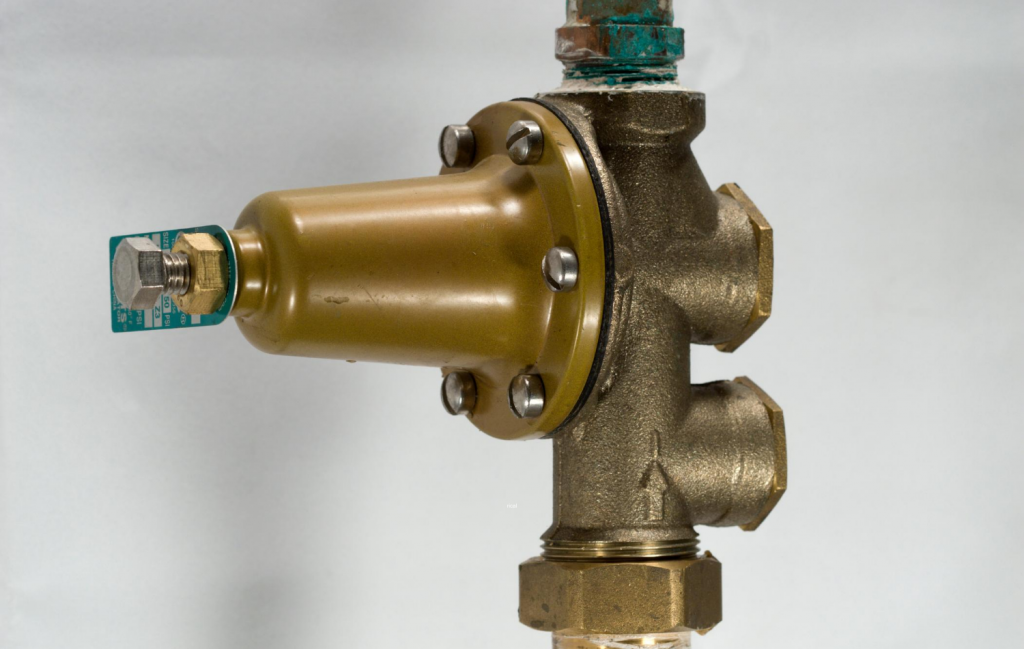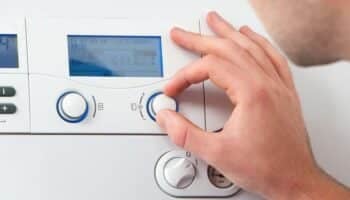When water enters your home at high pressure, it can stress your pipes and fixtures. After enduring high pressures for a long time, your pipes can give in and burst!
Knowing what a water pressure regulator is, and where to find it, can save you the worry of damaged plumbing.
Your water pressure regulator is usually located right after the main shut-off valve for your water supply. This is typically found outside the house. Once you know where the shut-off valve is, you’ll find the water pressure regulator.
There’s a lot more you can learn about water pressure regulators. Ready? Then let’s dive in!
How to find your water pressure regulator?
The water pressure regulator is a part of the plumbing that adjusts the water pressure in a home. It is also known as a pressure-reducing valve. This is a bell-shaped device attached to the pipe.

A regulator is needed for places where the city’s water supply enters the house at high pressure. You can actually adjust the pressure yourself if you have found it to be too high. This is a simple step that will increase the longevity of your pipes.
But first, let’s find it.
If you have no idea where your water pressure regulator is, then there are a few things you can keep in mind. These will help you locate it. Just note that it can be a game of hide and seek!
- You should find the water pressure regulator right after the main shut-off valve. If you wanted to turn off the water supply to the house in case of a leak, which valve would you turn? Whichever one it is, that’s likely the main shut-off valve. Look around once you find that, and the water pressure regulator should be nearby.
- Often, this will be outdoors. In cold regions, you may need to look indoors to find it. If there is a basement, that is most likely where it will be.
- If the house has a garage, you can take a look inside there as well.
- The main water pipes usually enter from the front side of the house. Look at the front or front sides of the house, or in the rooms that make up these parts. Unorthodox construction may end up taking the regulator to an odd location.
- If you have a water meter, you should find the regulator downstream from that.
- You may have noticed something resembling a small manhole cover in your yard or in front of the house. If you have one of these and still can’t find your valve, take a look inside! It could be there.
- Lastly, if you kept the home inspection report from when you purchased the home, you’ll find the location of the shut-off valve there.
If you still can’t find it after trying all this, it might be time to call a plumber!
What are the benefits of having a water pressure regulator?
There is a lot that a homeowner can prevent a lot by making sure they have a regulator working for them.
- It saves money: The water meter reads the amount of water that a home uses. The higher the number, the higher the bill. A regulator reduces the flow of water into the home, and reduces the cost of your water bills.
- It saves your pipes: A higher pressure can vibrate and damage plumbing. This can lead to burst or leaking pipes.
- It saves your appliances: Equipment can suffer from high water pressure. A washing machine or dishwasher are two good examples. There’s nothing to cause the damage when a regulator is on board.
Do all homes have a water pressure regulator?
No, not all homes have a water pressure regulator.
Whether you need a regulator depends on the water pressure from the municipal supply. If the city’s water lines run at pressures above 80psi, then you’ll need one to protect your pipes.
In some cases, the water supply may be variable depending on the time of the day. A water pressure regulator is key to converting this into a steady and reliable pressure for your home.
How long does a water pressure regulator last?
With a quality water pressure regulator, you should expect it to last anywhere between 10 to 15 years. There’s not much active maintenance that can go into one of these, so it is difficult to extend its lifespan.
How do I check the water pressure?
Fortunately, this isn’t as complicated a step as finding your regulator. Checking your home’s water pressure is a straightforward procedure. All you need is a water pressure gauge.

In some homes, they may build this into the plumbing somewhere. Otherwise, you can buy a gauge for cheap and do it yourself:
- With your gauge handy, locate a faucet to test the water pressure. Use one as close to the main water supply as possible: water can lose pressure as it runs through the house. This can also happen if the water is being used in the home, so ensure all other faucets are off.
- Attach the pressure gauge directly to the faucet. Tighten it in place.
- Open the faucet completely. If it is leaking in any location, you’ll need to further tighten it.
- The gauge should begin to read the water pressure. If it is over 60psi, then there is likely a problem. It should be between 40 and 45psi in any case.
If you have a water pressure over 60psi, it is likely that there is an issue with your water pressure regulator. It may need an adjustment. If that doesn’t help, then you may need to replace it.
Conclusion
A water pressure regulator can help save your plumbing. Consistently high water pressures can cause damage.
Finding this regulator can be tough. Look for a bell-shaped device on your pipes in front of your house, near your water meter or shut-off valve, or in your basement or garage. If your municipal water pressure is not high, you may not even have one.
Hopefully this guide has given you a few clues to hunt down your water pressure regulator.
Thank you for reading through this article to the end.
If you enjoyed it and learned a thing or two, please check out the related articles below!







